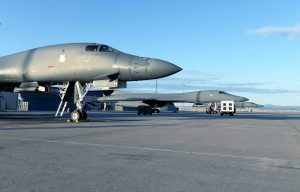
The U.S. Air Force plans to examine how to resolve parts obsolescence issues for the on-board oxygen generation systems (OBOGS) for the Boeing [BA] B-1B and Northrop Grumman [NOC] B-2 bombers. Honeywell's [HON] Yeovil, England subsidiary is the prime contractor for the systems. In addition, Honeywell has built other life support systems for military aircraft, including the U.S. Navy's T-45 trainer by Boeing and the Air Force's F-22 fighter by Lockheed Martin [LMT]. The Air Force Sustainment Center at Tinker…














